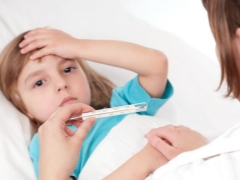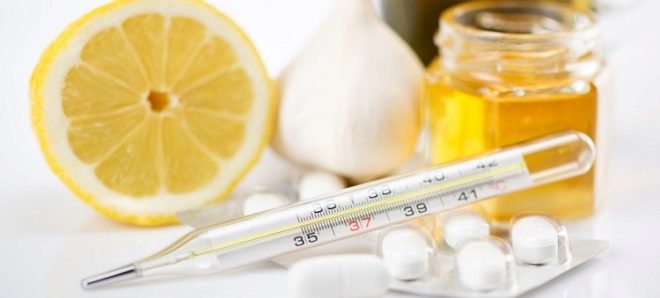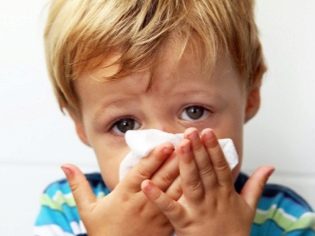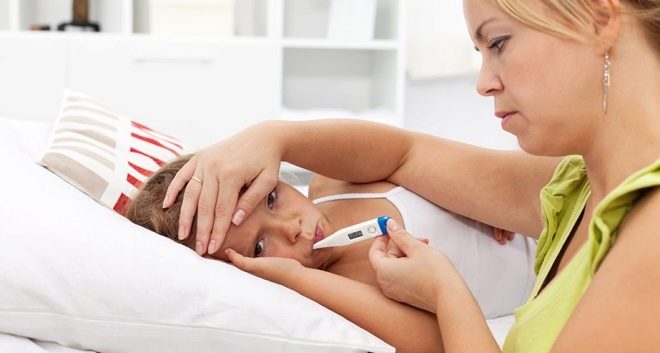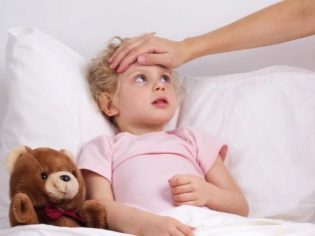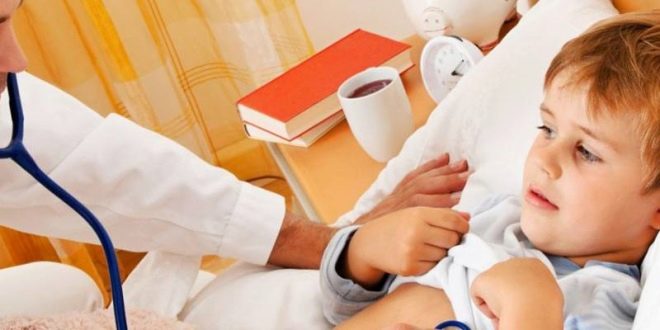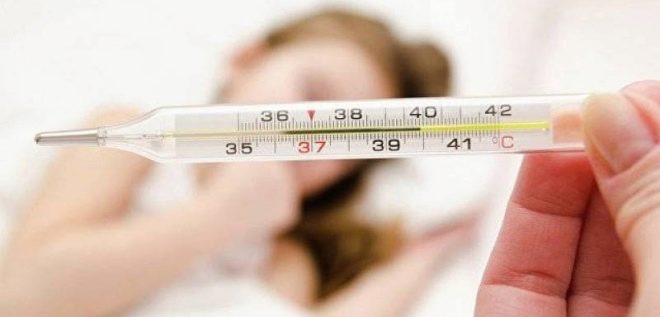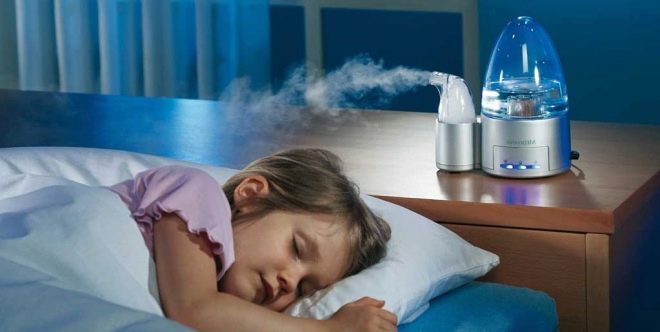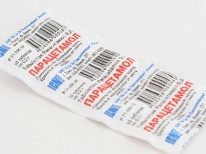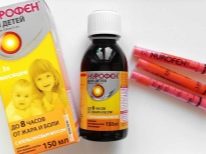How many days does a child usually have a temperature with ARVI?
When a child becomes ill with an acute respiratory viral infection, the parents have a reasonable question about how long the period of high and high temperature lasts and what to do with it. We will try to answer this question in detail in this article.
Why rises?
Acute respiratory viral diseases, abbreviated as SARS, are numerous and varied. This includes all diseases in which viruses affect the upper respiratory tract. This and adenovirus infection, and rhinovirus infection, a disease caused by a respiratory syncytial virus, as well as about three hundred other viral lesions.
Vaccination and vaccines against SARS do not exist. The only exception is the influenza virus, which also belongs to the group of ARVI. All respiratory viruses are very contagious, many of them are able to mutate, a few dozen of them can lead not only to an epidemic, but also to a real large-scale pandemic. ARVI is the most common cause of childhood illness in the world. Yevgeny Komarovsky, a well-known pediatrician, claims that up to 95% of all cases of sudden children's ailments are nothing but ARVI.
As the name implies, viruses primarily affect the respiratory system. They modify the cells of the ciliated epithelium - protective cells, designed to stand guard over the safety of internal tissues. As a result of such a lesion and the gradual withering away of the epithelium in the nose, nasopharynx and larynx during a viral infection, the familiar signs of ARVI appear to everyone - runny nose, cough, pain when swallowing, thinning nasal mucus and its uncontrolled course (rhinorrhea).
After the destruction of the first line of defense of the body, the ciliated epithelium, the virus is the causative agent, it starts its systemic spread by entering the blood. And here we can talk about the beginning of a febrile period, since this stage of acute respiratory viral infections is always accompanied by a rise in temperature and a deterioration in the general well-being of the child.
What this temperature will be, high (39-40 degrees) or subfebrile (37-38), depends on the specific virus with which the baby has become infected. The highest temperature develops with the flu, lower, but no less painful for the child, with parainfluenza or rhinovirus infection. In any case, by increasing the temperature of the body, the body tries to create unbearable and unsuitable conditions for the penetrated virus. Indeed, part of the virus particles die already only because the body temperature is a couple of degrees higher.
In addition, during the heat immunity is activated, natural human interferons are produced. As a result, immune protection can give a decent response to viruses and cope with the disease, but not immediately, but only a few days after the onset of the febrile period.
The most powerful and insidious viral ailments usually occur on the background of high temperature. These include all strains of influenza virus. For other viral infections, fever at 40.0 degrees is not peculiar, but it can also happen, given that immunity in childhood is very weak and not able to adequately respond to such serious threats as viruses.
The temperature in acute respiratory viral infections is kept at different intervals, there also a lot depends on the health of the child, his immunity, age and that particular virus that has settled in a small children's organism.
How much is holding up?
Fever with flu virus usually lasts 4 to 7 days. If the disease is mild and there are no complications, then the fever is reduced at the same time, leaving a feeling of weakness, fatigue, and great sleepiness. The period of recovery from influenza infection begins. During recovery, the child’s temperature may even be lowered for several days, because the influenza virus causes severe intoxication in the acute period, sometimes vomiting and diarrhea, and it can be difficult for the child’s body to recover from this disease.
When adenovirus infection, accompanied by cough and runny nose, the temperature usually rises sharply. The febrile period lasts about 6 days. A feature of adenoviral fever - temperature jumps. Most often, the disease is characterized by a wave-like temperature, the disease proceeds in two waves. In contrast to the flu, the acute period of adenovirus disease is always accompanied by copious nasal flow. Tonsils inflamed, covered with fibrinous bloom. Often, especially in infants, conjunctivitis manifests itself, there is a strong cough, turning into tracheitis.
In respiratory syncytial infections, the temperature rarely rises above subfebrile, often respiratory disease with all the symptoms characteristic of respiratory illness, with no temperature at all. The younger the child, the higher his temperature in this disease.
Due to the uncharacteristic febrile period, it is quite difficult to determine the temperature “tail” after the illness. According to statistics, the duration of the acute period of RSI - 10-12 days, while not all these days may be accompanied by fever.
Rhinovirus infection can also occur with a slight increase in temperature or even without it. The only symptoms will be liquid discharge from the nose, which can quickly become thicker. Sometimes an ailment is accompanied by coughing, redness of the eyelids, irritation of the eyes and tears. If an elevated temperature is observed, it does not exceed 37.5 degrees and does not last more than 2-3 days, but since a rhinovirus infection can last for a long time, it is possible that the temperature rises again within one episode of the disease.
With parainfluenza, the temperature increases gradually and can reach 39.0 degrees. The duration of the febrile period is about 5 days. The symptoms are similar to those of classic flu, but the course of the disease is easier, and the likelihood of complications is less likely.
It should be noted that in early childhood the course of a viral infection is always somewhat different from the disease in children of preschool and school age. So, in babies at 1-2 years old, even with a rhinovirus infection, temperature fluctuations are possible, since their immunity is much weaker. With age, the child gets a natural defense - accumulates antiviral antibodies and gets sick more easily.
Why does not subside?
When the disease is prolonged, and the fever does not decrease for more than 7 days, this may indicate that the baby, due to a decrease in immunity during the illness, had the accession of a secondary infection, exacerbated chronic diseases, and complications developed. Not all viral infections are prone to complications, for example, complications with rhinovirus infection are rather rare, with parainfluenza they also occur very infrequently. But this possibility cannot be completely excluded.
If the temperature is kept at subfebrile values, and the child’s well-being remains unimportant, it is possible that he has a bacterial infection. Repeated rise in temperature after apparent recovery in time may also indicate the development of complications.
To understand the diversity of possible complications of acute respiratory viral infections for parents is not able to do it on their own. You should not even try to diagnose your baby. If the high temperature lasts longer than the duration of the febrile period determined for a particular infection, it is necessary to inform the attending physician. Complications of acute respiratory viral infections need separate treatment after detailed diagnosis and determination of the severity and nature of the complication.
Forced decrease in body temperature
The desire and desire of parents to alleviate the condition of the beloved offspring is quite reasonable and understandable, but do not rush and immediately begin to reduce fever with medicines with the onset of fever. Increased temperature with ARVI - a sign of proper and effective work of the immune system. If there is no temperature, the production of antibodies and interferon will slow down. This means that the child will be ill for longer, and the probability that the disease will become complicated and get an unpleasant continuation will increase significantly.
The temperature in acute respiratory viral infections is not an enemy, but a friend, but it is necessary to take into account the age of a small patient. Too high a fever in early childhood can in itself cause specific complications, such as febrile seizures or dehydration.
If the child is an infant, the temperature is recommended to start lowering when the thermometer approaches 38.0 degrees.
If a teenager is sick, you can wait until 39.0 degrees and only then begin to reduce fever. If a small patient is from 3 to 7 years old, it is necessary to reduce the temperature when the testimony on the thermometer is about 38.5 degrees.
Not only age matters. Careful observation of the child will tell parents how difficult the infection is. In severe forms of acute respiratory viral infections, the heat is also reduced from 38.0 degrees, and this does not depend on age.
What to reduce?
The most correct thing is to take a wait-and-see attitude and watch the child for a while, if, of course, this is not about a baby with a temperature above 39.0 degrees. At the very beginning of the disease in the first hours, the nature of the temperature increase will tell the parents not only what the child could have been infected with, but also how to behave further.
If the temperature is high, the child necessarily needs bed rest.. Heat creates an increased load on the blood vessels, heart, nervous system. If the readings of the thermometer fit into the frame of subfebrile temperature, you can allow the baby quiet games in a sitting or reclining position. The less a small, restless researcher spends his own energy on movements and emotions, the more this energy the body can direct to internal processes that approximate the day of recovery.
It is not necessary to dress the sick person warmer, even if the child has chills. Panties and a light T-shirt are the best outfit for a patient with ARVI. In bed you should not wrap it in warm blankets and rugs; it will be good to just cover the child with a light veil or sheet. In the room you need to thoroughly clean the floors, wipe the dust, aerate, regardless of the season outside the window. Then it is necessary to study indications of the room thermometer. The house should be no higher than 21 degrees Celsius. In the process of the whole disease, it is important to maintain sufficient humidity - at least 50-70%.
If there is no special device - a humidifier, you can simply moisten a towel or a sheet with water and hang it on the battery, checking them from time to time and additionally wetting them with water.
In such conditions, the mucous membranes of the upper respiratory tract will receive additional support, will not dry out and will be able to more effectively resist a viral attack.
Sick SARS, even if it does not have a high temperature, should drink more. The younger the child, the harder it is to get him to drink, but parents will have to do a little trick - pour the drink on the cheek with a disposable syringe without a needle, water from a spoon.Drinking should be exclusively at room temperature, it is not necessary to force the child to drink hot tea. Only a room temperature liquid is rapidly absorbed and absorbed, not only compensating for fluid loss from hyperthermia, but also from the inside by participating in additional moistening of the mucous membranes of the respiratory tract.
Carbonated drinks, milk, cocoa, juices are not suitable for drinking. It is best to give ordinary drinking water, cook compote from dried fruits, make homemade fruit juice from cranberries for the child.
From medicines to reduce fever, only paracetamol-based drugs are recommended for children under the age of 16, but aspirin is absolutely contraindicated for babies - it can cause lethal Ray's syndrome.
The form of the drug - the choice of parents, but you should take into account age characteristics. If a teenager can easily be given a “Paracetamol” pill, then rectal suppositories are more suitable for infants. ”Cefecone D»With paracetamol, and a preschooler and younger student can be given a sweet and tasty fruit syrup" Nurofen "or" Panadol ".
If the temperature is well strayed with antipyretic, then the disease is under control. If the child’s body does not respond to the medication, and the fever does not diminish or grows, an emergency room should be called.
There is always a lytic mixture of papaverine, suprastin and analgin at the disposal of the ambulance team of the ambulance team. Injecting such a mixture quickly reduces fever and reduces sensitization, and also eliminates the muscle pains that accompany many viral ailments.
How to treat ARVI in children, see the following video.
